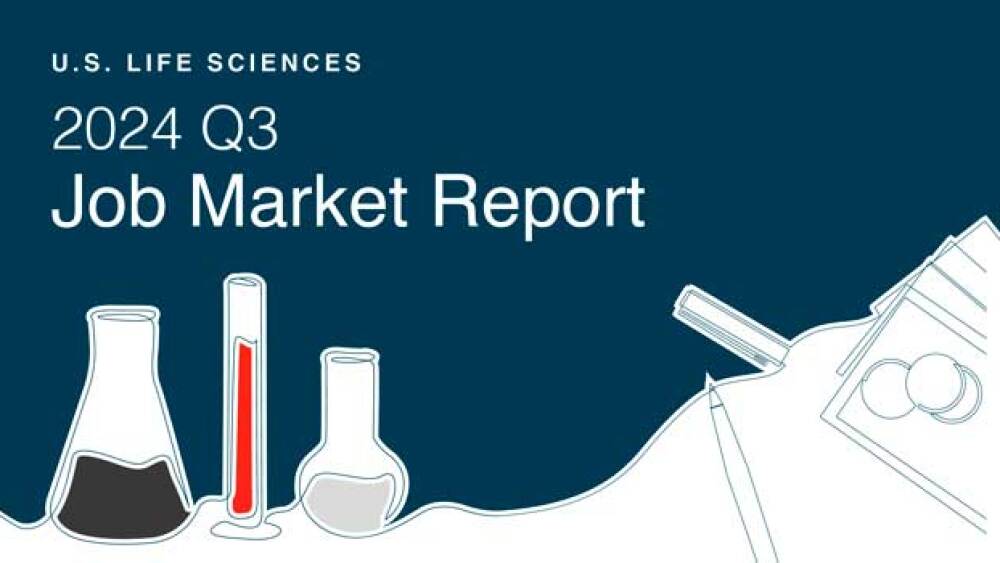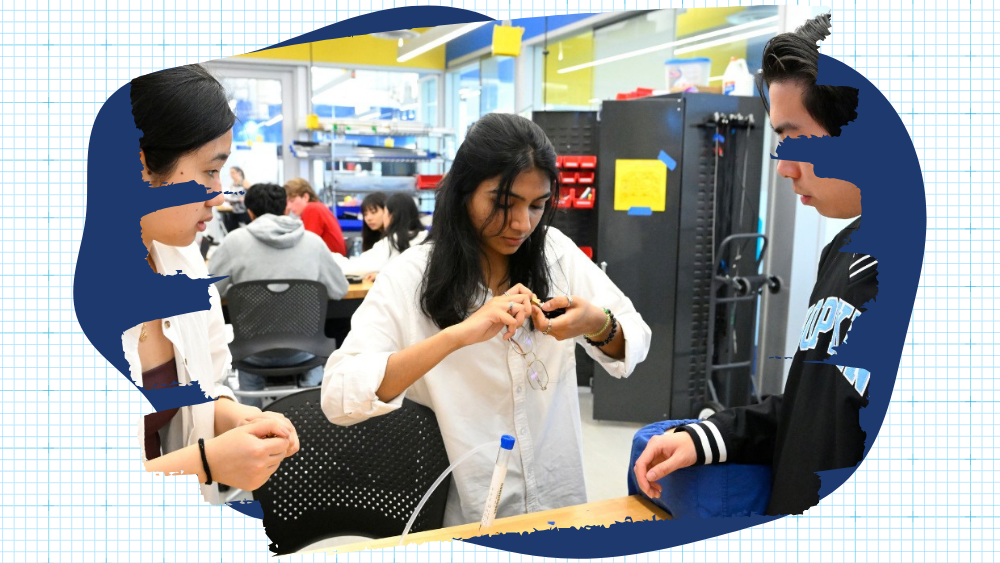Carina Clingman answers questions about forging professional connections in-person and on LinkedIn.
Welcome to Career Coach, a column for jobseekers and employees navigating the ins and outs of finding, landing and succeeding in jobs in the biotech industry. Each month, Carina Clingman, PhD, founder of The Collaboratory Career Hub and host of the Biotech Career Coach Podcast, answers questions from the community. You can email her with questions at: hello@collaboratorycareerhub.com
Happy New Year! We get a lot of questions about LinkedIn and networking, so this month, we’re answering three related queries to help set you up for networking success in 2024. Networking is essential whether you’re on the job market or building your career. Here’s how to make it a little less painful:
Question: I’m trying to build my LinkedIn network. How many people should I try to connect with, and how do I connect without being creepy? It feels weird to ask someone to connect if I don’t know them.
CC: This is a very common question and one to which I can personally relate. I have had to overcome the fear of bothering or annoying people by connecting with them in order to excel professionally. The good news is that people are on LinkedIn to connect, build their networks and advance their careers. It’s not creepy, spammy or unprofessional if you go about networking correctly. Turning things around, are you annoyed or bothered when someone sends you a well-intentioned connection request? Probably not, so let’s set that fear aside. If you connect genuinely, coming from a place of giving rather than taking, suddenly networking via LinkedIn feels a lot less awkward.
First, look for individuals with roles or titles similar to yours. For instance, if you are a scientist, connect with scientists, senior scientists and associate scientists at companies related to yours or where you might like to work someday. If you’re coming out of school, identify people with titles you might apply for. These are your peers, and they will follow you throughout your career, advancing and getting promotions as you advance and get promotions. They are the people who can give you the most relevant insights, support your career, and who know about upcoming opportunities.
When sending a connection request, include a personalized note. I use variations on the following tried-and-true formula for my requests:
Name + Compliment + Reason for connecting + Open-ended question
Here’s why this formula works: Names are powerful and command attention. Compliments should be subtle; complimenting their company choice is usually very effective. Psychology research shows that giving a reason for making a request—even a flimsy excuse—makes the request more likely to be accepted. I usually cite that we share network connections or that I’d like to follow their career. Finally, an open-ended question is a conversation starter, unlike a yes/no question.
Example: “Hi [Name], I noticed we have several mutual connections, and I’d love to see your updates in my feed. I’ve been following [Company]’s work in [specific field or project], and it’s really fascinating/exciting/inspiring. How do you find the work environment there?”
Don’t limit yourself to just one or two people. The larger the company, the more people you should try to connect with. This broadens your network within the company and increases the chances of having valuable connections when you need them. Send 10–20 personalized connection requests each day. While that might seem like a lot, this volume will train LinkedIn that you are active, which will increase your reach on the platform. Don’t worry if you hit a connection request limit. There is no penalty if LinkedIn says you cannot send additional requests for the week. That limit will increase over time with consistent use of the platform.
Question: I’ve been trying to use LinkedIn for my job search, but no one is helping me. I’m getting really frustrated because when people connect with me, I ask about their posted jobs, and then they don’t reply!
CC: Yikes, it sounds like you’re moving too fast and maybe even being a bit selfish about how you use LinkedIn. Networking is like making real-world friends. You would not introduce yourself to a stranger at a party and then ask for an enormous favor in the next breath, would you? No! You need to warm things up, start with some casual conversation and work toward asking for help over time. Building your network from a place of curiosity, service and goodwill means that your future job searches will be easier because you’ll have an extensive network of peers grateful for the support and encouragement you’ve given over the years, ready to return the favor.
Start by following the steps in my answer above to identify and connect with people who would be your peers in the company. Next, follow the company’s LinkedIn page to stay updated on the latest news, developments and job postings. It also shows your interest in the company, which its recruiters and talent professionals can see if they are using LinkedIn Recruiter (which they probably are!).
Once you’ve established a connection, engage in light conversation. In my answer to the first question, I suggest asking an open-ended question. You can ask questions about people’s experience working for the company and how they like the area or the campus if it’s a large company with several locations. You can inquire about the weather, the work culture, or their day-to-day work. Three or four exchanged notes are sufficient; you don’t need to maintain an endless conversation.
After building a rapport, you can casually express your interest in working for the company. Simply say, “It sounds like working for [Company] is a dream. I’ll watch the website for jobs that look like a good fit. If you hear of anything, please drop me a note.”
Now that you’re connected, stay engaged over time, even if immediate opportunities don’t arise. Send an occasional note, share relevant content, celebrate their wins and support them by re-posting if they share that they have become open to work. These relationships will be beneficial in the long term, even if they don’t yield a job today.
Question: Help! I signed up for an in-person networking event in Boston. I am so awkward, and I need some advice and tips to make a good impression.
CC: I’ve been there. Even now, after routinely attending networking events for the past 20 years, I still have to give myself a quick pep talk before some events. I’ll let you in on a little secret. I’ve interviewed incredibly successful industry leaders for our Building Biotechs podcast, and most people are not comfortable with networking. You’re in good company! Here are my tips and tricks to make it easier and more successful.
- Wear comfortable shoes. If you want to make the most of the event, you’ll be on your feet the whole time. I use gel inserts to keep my feet happy.
- Eat sparingly. Nothing is more awkward than juggling a drink and a plate full of food. You’ll want to take bites of things to stay energized, but I usually eat before or after the event to make the most of my time and avoid talking with my mouth full.
- Hold a beverage. I avoid alcohol at networking events, but I like getting seltzer water because it gives one hand something to do and keeps my throat from getting dry.
- Use the tables to start conversations. If I lack a conversational partner and feel awkward, I’ll sidle up to a table where a few folks have congregated and ask if I can put my drink down for a moment. Then I’ll open my bag to pretend to find something and introduce myself as I’m thanking them for allowing me to use the table.
- Use the name tags as conversation-starter clues. If you’re lucky, the name tag will include company names and sometimes even titles. I use the same compliment/question tactic for in-person introductions as I do on LinkedIn: “Oh wow, I hear such great things about [Company]. How do you like working there?”
- Take business cards. Yes, I know there are apps for that now, but trust me, they never work correctly, and people will need their phones out to scan your QR code. We tried switching to paperless cards last year, but biotech is not ready yet. If you have a digital card, that’s great, but keep some physical cards on hand.
- Keep the conversation going on LinkedIn. Within 24 hours, send connection requests to everyone you meet, along with (you guessed it!) a compliment and an open-ended question.
Carina Clingman, PhD, is the founder of The Collaboratory Career Hub, an online community for people interested in working in biotech. She is also the founder and CEO of Recruitomics Consulting, which specializes in talent acquisition and talent strategy for startup biotechs. Listen to her new Biotech Career Coach Podcast, learn about joining the career hub here, or send questions to hello@collaboratorycareerhub.com.






